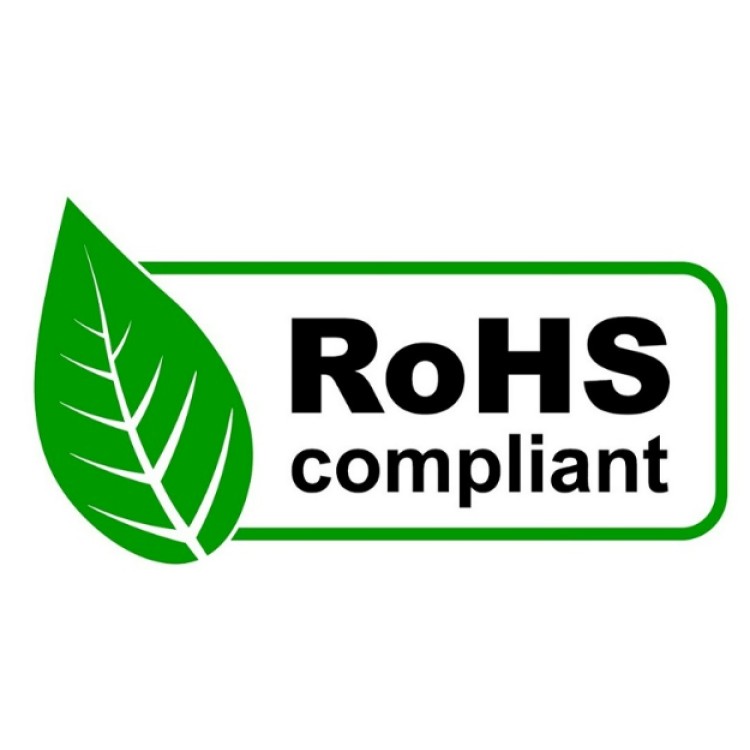钢筋欧洲ROHS认证
-
¥500.00
指令修改
播报
编辑
该计划,重铸指令是一个更好的监管环境的整体承诺的一部分。改革涉及的实施,执法和连贯性的改善。RoHS指令也需要检讨,尤其是涉及到包括在其范围内的医疗设备和监测和控制仪器,并限制物质名单的适应。经验与实施的年,在运行了广泛的利益相关者磋商,重铸透露在决定某些产品是否属于范围内的困难,太多的不符合标准的产品和成员国之间的差异,如实施有关的问题,产品符合性评估和开展市场监督“的方法。也有一个混乱的RoHS和新的政策和立法涵盖的化学品,例如增加不足或低效的执行指令的风险之间的关系的潜力。
RoHS进展情况
一些大公司已经注意到RoHS并开始采取应对措施,如SONY公司的数码照相机已经在包装盒上声明:该产品采用无铅焊接;采用无铅油墨印刷。
信息产业部2004年也出台了《电子信息产品污染防治管理办法》内容与RoHS类似,并于十月份成立了“电子信息产品污染防治标准工作组”,研究和建立符合我国国情的电子信息产品污染防治标准体系;开展与电子信息产品污染防治有关的标准研究和制修订工作,特别是加快制定产业急需的材料、工艺、名词术语、测试方法和试验方法等基础标准。
2011年7月1日,欧盟在公报(OJ)上发布了新版RoHS指令——指令2011/65/EU。
作为中国电子电气产品制造企业非常熟悉的一项指令,其出台历程可谓是一波三折。由于修订过程中各方分歧较大,因此这项本来意欲在2009年就出台的修订案一拖再拖。特别是就是否扩大产品范围和受限物质的范围,欧盟内部包括、欧洲议会、理事会、业界、NGO等都进行了激烈的争论。
2011/65/EU较原RoHS指令2002/95/EU的不同主要在:
1. 扩大了产品范围:将所有的电子电气产品都涵盖在了指令规管的范围内(包括线缆和备用零部件),但是给予了新添入的第8类医疗器械和第9类监视和控制仪器(包括工业监控仪器)一定的过渡期,此外,还针对这两类产品给出了20项的豁免(列于附件IV中)
2. 理清了部分定义
3. 管控物质的范围未扩大,还是维持了原有的六种物质的原要求,但是提出了今后的审查过程中,要对包括DEHP等在内的物质优行考察,为指令今后扩大管控物质的范围铺路
4. 删除了其中的生产商(producer)规定,而添入了“制造商”(manufacturer)、“授权代表”(authorised representative)、“进口商(importer)”、“经销商”(distributor)的定义,并对其职责进行了明确的界定
5. 规定了产品需贴附CE标志及CE标志的相关事宜。
本指令将在发布于OJ第20日起生效,成员国需要在2013年1月2日前将其转化为本国法律。
2011/65/EU的发布将给中国的电子电气产品制造企业带来一定的影响,特别是由于将医疗器械类产品、监视和控制仪器产品列入规管的范围,因此对这两类制造企业的影响将是非常的
此外,由于电子电气产品上需要贴附CE标志,因此,对业界符合指令的要求,也将是一个的挑战。
豁免项
播报
编辑
简述
由于技术问题,部分材料或者产品的制造技术还做不到ROHS指令要求,在经过向欧盟的特殊申请后,以下项目可以获得豁免(部分豁免是有期限的):
RoHS ExemptionsEU RoHS
Items Exemption Clauses
原有
1 Mercury in compact fluorescent lamps not exceeding 5 mg per lamp
2 Mercury in straight fluorescent lamps for general purposes not exceeding:
- halophosphate 10 mg
- triphosphate with normal lifetime 5 mg
- triphosphate with long lifetime 8 mg.
3 Mercury in straight fluorescent lamps for special purposes.
4 Mercury in other lamps not specifically mentioned in this Annex.
5 Lead in glass of cathode ray tubes, electronic components and fluorescent tubes.
6 Lead as an alloying element in steel containing up to 0.35% lead by weight, aluminium containing up to 0.4% lead by weight and as a copper alloy containing up to 4% lead by weight.
7 - lead in high melting temperature type solders (i.e. lead-based alloys containing 85 % by weight or more lead)
- lead in solders for servers, storage and storage array systems, network infrastructure equipment for switching, signalling, transmission as well as network management for telecommunications
- lead in electronic ceramic parts (e.g. piezoelectronic devices).
8 Cadmium and its compounds in electrical contacts and cadmium plating except for applications banned under Directive 91/338/EEC (1) amending Directive 76/769/EEC (2) relating to restrictions on the marketing and use of certain dangerous substances and preparations
9 Hexavalent chromium as an anti-corrosion of the carbon steel cooling system in absorption refrigerators.
10 Lead used in compliant pin connector systems
11 Lead as a coating material for the thermal conduction module c-ring
12 Lead and cadmium in optical and filter glass
13 Lead in solders consisting of more than two elements for the connection between the pins and the package of microprocessors with a lead content of more than 80% and less than 85% by weight
14 Lead in solders to complete a viable electrical connection between semiconductor die and carrier within integrated circuit Flip Chip packages
15 DecaBDE in polymeric applications
16 Lead in lead-bronze bearing shells and bulbs
17 Lead in linear incandescent lamps with silicate coated tubes
18 Lead halide as radiant agent in High Intensity Discharge (HID) lamps used for professional reprography applications
19 Lead as activator in the fluorescent powder (1% lead by weight or less) of discharge lamps when used as sun tanning lamps containing phosphors such as BSP (BaSi2O5:Pb) as well as when used as specially lamps for diazo-printing reprography, lithography, insect traps, photochemical and curing processes containing phosphors such as SMS (Sr,Ba)2MgSi2O7:(Pb)
20 Lead with PbBiSn-Hg and PbInSn-Hg in specific compositions as main amalgam and with PbSn-Hg as auxiliary amalgam in very compact Energy Saving Lamps (ESL)
21 Lead oxide in glass used for bonding front and rear substrates of flat fluorescent lamps used for Liquid Crystal Displays (LCD)
22 Lead and cadmium in printing inks for the application of enamels on borosilicate glass.
23 Lead as impurity in RIG (rare earth iron gamet) Faraday rotators used for fibre optic communication systems.
24 Lead in finishes of fine pitch components other than connectors with a pitch of 0.65mm or less with NiFe lead frames and lead in finishes of fine pitch components other than connectors with a pitch of 0.65mm or less with coppler lead frames.
25 Lead in solders for the soldering to machined through hole discoidal and planar array ceramic multilayer capacitors.
26 Lead oxide in plasma display panels (PDP) and surface conduction electron emitter displays (SED) used in structural elements, notably in the front and rare glass dielectric layer, the bus electrode, the black stripe, the address electrode, the barrier ribs, the seal frit and frit ring as well as in print pastes.
27 Lead oxide in the glass envelope of Black Light Blue (BLB) lamps.
28 Lead alloys as solder for transducers used in high-powered (designated to operate for several hours at acoustic power levels of 125 dB SPL and above) loudspeakers.
29 Hexavalent chromium in corrosion preventive coatings of unpainted metal sheetings and fasterners used for corrosion protection and Electromagnetic Interference Shielding in equipment falling under category three of Directive 2002/96/EC (IT and telecommunications equipment). Exemption granted until 1 July 2007.
30Lead bound in crystal glass as defined in Annex I (Category 1,2,3 and 4) of Council Directive 69/493/EEC
一,ROHS是什么:
ROHS,全称“限制使用某些有害物质指令”(Restriction of Hazardous Substances Directive),是由欧洲联盟制定的一项重要环保法规。新ROHS认证指令2015/863/EU指令,也被称为RoHS3.0指令。该指令旨在限制在电子电气设备中使用特定有害物质,以减少这些物质对环境和人类健康的不良影响。
1.1 ROHS认证目的:
ROHS的主要目的是促使企业采用更环保的材料和生产工艺,降低电子产品对环境和人体的潜在危害。通过限制特定有害物质的使用,该指令在电子电气设备制造领域推动了可持续发展和环保意识的提升。
以下是ROHS主要概述:
1.2 有害物质限制: ROHS指令限制电子电气设备中特定有害物质的使用,包括但不限于铅、汞、镉、六价铬、多溴联苯(PBB)、多溴联苯醚(PBDE)以及某些邻苯二甲酸酯。
1.3 环保保护: ROHS认证旨在降低电子电气设备的有害物质排放,减少这些设备在使用和处理过程中对环境的负面影响。通过限制有害物质的使用,ROHS有助于减少土壤、水源和大气中的污染。
1.4 人体健康: 通过减少电子电气设备中的有害物质,ROHS认证旨在降低人们使用这些设备时接触到有害物质的风险。这有助于保护生产、使用和处理这些设备的工人、消费者以及废弃设备的处理人员。
1.5 资源循环利用: 有害物质的减少有助于提高电子电气设备的可回收性,促进资源的循环利用。这符合可持续发展的原则,有助于减少对新原材料的需求,降低废弃设备对环境的负担。
1.6 符合欧盟法规: 根据ROHS指令,欧盟成员国有义务在国内法中实施这一指令,并对其境内销售的电子电气设备执行ROHS认证要求。因此,对于希望在欧洲市场销售的电子电气产品来说,办理ROHS认证是符合欧盟法规。